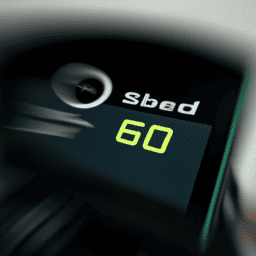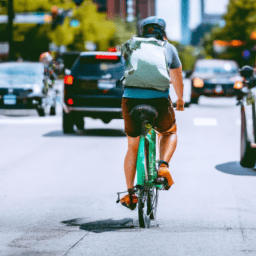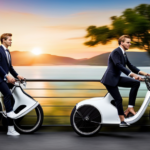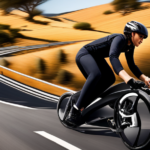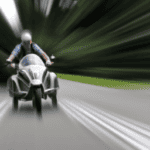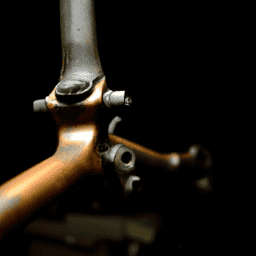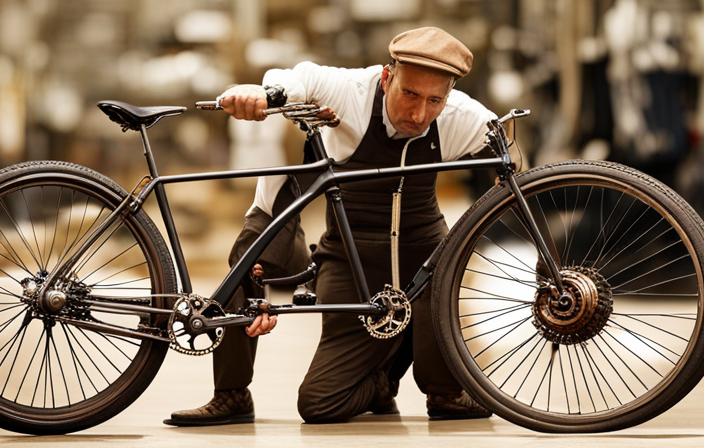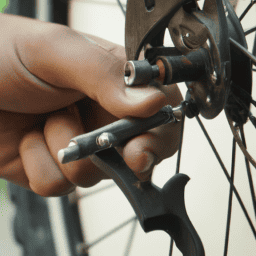Ever think about how zippy an electric bike can get? Being a big fan of e-bikes, their speed and nimbleness always blow my mind. But really, what’s their top speed?
In this article, I will explore the different classes of e-bikes, local regulations and laws, as well as various factors that can affect e-bike speed. I will also highlight popular types of e-bikes and provide tips for riding safely and efficiently.
Electric bicycles, or e-bikes, have become increasingly popular in recent years due to their convenience and eco-friendliness. Unlike traditional bicycles, e-bikes are equipped with a motor and battery that assists the rider in pedaling. This means that riders can go faster and further with less effort.
However, the speed of an e-bike can vary depending on several factors, including the type of e-bike, local regulations and laws, and environmental conditions. In this article, I will delve into the details of these factors and provide insights into how fast an e-bike can go.
Key Takeaways
- Electric bikes have varying speed limits depending on their classification and local regulations.
- The top speed of an e-bike can reach up to 28mph but is affected by weight, tire pressure, and road conditions.
- Battery life and capacity play a significant role in determining the speed and distance an e-bike can travel.
- Proper gear, equipment, and obeying traffic laws are crucial for safe e-bike riding.
Understanding the Different Classes of Electric Bicycles
So, you’re wondering how fast an electric bicycle goes? Well, let’s start by understanding the different classes of e-bikes.
Different e-bike classes have varying speed capabilities and limitations, so it’s important to know which type of electric bicycle you have or plan to purchase.
Class 1 e-bikes have a motor that assists the rider only while pedaling, and the assistance stops once the bike reaches 20 mph.
Class 2 e-bikes have a motor that can be activated by a throttle, and the maximum speed is also 20 mph.
Class 3 e-bikes, also known as speed pedelecs, have a higher assisted speed limit of 28 mph. However, riders must be pedaling to receive assistance, and the bike must be equipped with certain safety features such as a horn and rearview mirror.
It’s important to note that the maximum speed is limited by law, and going over the speed limit can result in fines or other legal consequences.
Understanding the different e-bike classes and their speed capabilities is just the first step in knowing how fast an electric bicycle can go. Local regulations and laws play a crucial role in determining the maximum speed limit for e-bikes in your area, so it’s important to research and follow these regulations to ensure a safe and legal riding experience.
Local Regulations and Laws
As a rider, it’s important to understand the local regulations and laws regarding electric bicycles.
Maximum speed limits can vary from city to city, and it’s crucial to know what the limit is before taking to the streets.
Additionally, helmet and age requirements may also differ, so it’s vital to research what is required in your specific area.
Finally, registration and licensing may also be necessary, so make sure to check with your local authorities to ensure you’re compliant with all necessary regulations.
Maximum Speed Limits
You’ll be thrilled to know that electric bicycles have a maximum speed limit that can reach up to 28 miles per hour! However, this top speed is not always easily achievable and can depend on a variety of factors.
Here are some key points to keep in mind when considering the maximum speed of an electric bike:
-
Top speed records: Some electric bicycles are designed specifically for speed and can reach much higher top speeds than the average e-bike. In fact, there are even speed records for electric bikes that have been set at over 80 miles per hour! However, these bikes aren’t typically available for purchase and aren’t legal for use on public roads.
-
Factors affecting acceleration: Even if an electric bike has a high top speed, it may not be able to reach that speed quickly due to factors such as weight, tire pressure, and road conditions. In general, lighter e-bikes with larger motors and high-quality components will have better acceleration and be able to reach their top speed more easily.
-
Local regulations: It’s important to note that the maximum speed of an electric bike may be limited by local regulations and laws. In many areas, e-bikes are only allowed to reach a top speed of 20 miles per hour in order to be classified as a bicycle and not a motor vehicle.
As you consider the maximum speed of your electric bike, it’s also important to keep in mind other factors such as helmet and age requirements.
Helmet and Age Requirements
Don’t forget to wear a helmet when riding your e-bike, especially if you’re under the age of 18 – do you really want to risk a head injury? Helmet safety is an important aspect of e-biking that should not be overlooked. In fact, many states have laws in place that require individuals under a certain age to wear a helmet when riding an e-bike. For example, in California, anyone under the age of 18 must wear a helmet when riding an e-bike. It’s not just a matter of following the law, it’s about protecting yourself from injury.
Age restrictions also come into play when it comes to e-biking. In some states, individuals under the age of 16 may not be allowed to ride an e-bike on public roads or paths. It’s important to check your state’s laws regarding e-bike age restrictions before hitting the road. By following these regulations, you can ensure that you are riding safely and legally. Next, we’ll discuss the importance of registration and licensing when it comes to e-biking.
Registration and Licensing
Registering and obtaining a license for your e-bike can ensure that you’re legally allowed to ride it on public roads. Here are some general guidelines to follow:
-
Check your state or country’s regulations regarding e-bike registration and licensing. Some may require all e-bikes to be registered, while others may only require certain types.
-
Gather the necessary documents, such as proof of ownership, identification, and insurance.
-
Complete the registration process, which may involve filling out forms and paying a fee.
-
Take any required tests or classes to obtain a license, such as a written test or safety course.
By following these steps, you can ensure that you’re legally able to ride your e-bike on public roads and avoid any potential fines or legal issues.
Now, let’s move on to the next section and discuss the factors that can affect the speed of your e-bike.
Factors That Affect E-bike Speed
As an electric bicycle rider, there are several factors that can affect my speed.
Firstly, my weight as the rider plays a significant role in determining how fast the bike can go.
Secondly, the terrain and conditions of the road I’m on also have an impact on my speed.
Finally, the battery life of my e-bike can limit how long and how fast I can ride.
These factors must be taken into consideration when determining the maximum speed of an electric bicycle.
Weight of the Rider
You’ll be surprised at how much your weight can affect the speed of your electric bicycle. As a rider, your weight plays a significant role in determining how fast your e-bike can go.
Here are four ways how the rider’s weight can impact the speed of an electric bicycle:
-
E bike motor power: The motor power of an e-bike is designed to carry a certain weight limit. If the rider’s weight exceeds the limit, the motor may not be able to provide enough power to attain maximum speed.
-
Torque relation: The torque of a motor is inversely proportional to the weight of the rider. The heavier the rider, the lower the torque. This means that the motor will struggle to push the bike at higher speeds.
-
Battery life: A heavier rider may drain the battery faster than a lighter rider, which can affect the speed of the e-bike.
-
Aerodynamics: A rider’s weight can affect the aerodynamics of the e-bike, creating more drag and resistance that can slow down the bike.
As important as the rider’s weight is for determining e-bike speed, other factors such as terrain and weather conditions also play a crucial role.
Terrain and Conditions
When riding on hilly terrain, it can be challenging to maintain a steady pace and conserve battery life, especially if you frequently switch between pedal assist levels. The effect of weather and the impact of elevation can also influence the speed of an electric bicycle.
For instance, strong headwinds or heavy rain can significantly decrease your speed, while high altitude can reduce the power output of the motor. It’s important to keep in mind that riding an e-bike on rough terrain and in harsh weather conditions can drain the battery faster than on flat, dry roads.
Therefore, it’s crucial to plan your route accordingly and adjust your pedal assist level based on the terrain and weather. In the next section, we’ll discuss how terrain and conditions can affect battery life.
Battery Life
To ensure your e-bike lasts as long as possible, it’s important to understand how terrain and weather conditions impact battery life. However, another key factor in determining how fast an electric bicycle can go is battery life.
The battery capacity and the charging methods used can greatly affect the speed and distance your e-bike can travel. When it comes to battery life, it’s important to consider the capacity of the battery. Higher capacity batteries will generally last longer, allowing you to travel further distances and for longer periods of time.
Additionally, the charging methods used can also impact battery life. Fast charging may seem like a convenient option, but it can also lead to a shorter overall battery life. It’s important to balance convenience with battery health to ensure your e-bike can go as fast and as far as possible.
As we move onto discussing popular types of e-bikes, it’s important to keep in mind the impact battery life has on their performance.
Popular Types of E-bikes
One of the most popular types of e-bikes is the pedal-assist bike, which uses a motor to help riders reach speeds of up to 20 mph. These bikes are designed to provide a boost to the rider’s pedaling power, making it easier to climb hills and travel longer distances. Pedal-assist bikes come in a variety of styles, from road bikes to mountain bikes, and offer a range of features to suit different riding needs.
To help you choose the right e-bike for your needs, here is a table outlining some of the most popular types of pedal-assist bikes and their features:
| Type of E-bike | Features |
|---|---|
| Road bike | Lightweight frame, narrow tires, designed for speed and efficiency |
| Mountain bike | Wide tires, suspension, designed for off-road terrain |
| Folding bike | Compact size, easy to store and transport |
| Cargo bike | Large carrying capacity, ideal for transporting goods or children |
| Commuter bike | Fenders, lights, racks, designed for daily commuting |
Now that you have a better understanding of the different types of e-bikes available, let’s move on to some tips for riding an e-bike safely and efficiently.
Tips for Riding an E-bike Safely and Efficiently
As an avid rider of e-bikes, it’s crucial to ensure that I’m always safe and efficient on the road. To achieve this, I prioritize wearing proper gear and equipment, including a helmet, reflective clothing, and gloves.
Additionally, I always make sure to obey traffic laws, such as stopping at red lights and signaling when turning. Lastly, I regularly monitor my battery life and speed, ensuring that I don’t run out of power unexpectedly and that I’m always traveling at a safe and legal speed.
These practices have helped me become a confident and responsible e-bike rider.
Proper Gear and Equipment
Gear up properly and equip yourself with the necessary safety gear before hitting the road on your electric bicycle, so you can fully enjoy the ride and feel confident in your speed. Essential accessories for electric biking include a properly sized helmet, gloves, and eyewear to protect your head, hands, and eyes in case of accidents. Clothing for electric biking should be comfortable and breathable, such as moisture-wicking shirts and padded shorts to prevent chafing. Additionally, choosing the right bike size is crucial for comfort and stability while riding.
To ensure a safe and enjoyable ride, it’s important to have the right equipment and gear. Here’s a table of essential gear to consider before hopping on your electric bicycle:
| Essential Gear | Description |
|---|---|
| Helmet | Protects your head in case of accidents |
| Gloves | Protects your hands and provides better grip on handlebars |
| Eyewear | Protects your eyes from wind, dust, and debris |
| Moisture-wicking shirt | Keeps you cool and dry |
| Padded shorts | Prevents chafing and provides extra comfort |
By wearing the proper gear and equipment, you can ride your electric bicycle confidently and safely. However, it’s important to also obey traffic laws to ensure the safety of yourself and others on the road.
Obeying Traffic Laws
To ensure the safety of yourself and others on the road, it’s crucial to obey traffic laws while riding your e-bike. Safe cycling involves following the same laws that apply to traditional bicycles. This includes stopping at stop signs and red lights, riding in the same direction as traffic, and using hand signals when turning.
Additionally, it’s important to be aware of your surroundings and anticipate potential hazards, such as potholes and parked cars. Sharing the road with other vehicles can be particularly challenging on an e-bike, as you may be traveling at a faster speed than traditional bicycles.
It’s important to communicate your intentions to drivers by using hand signals and making eye contact whenever possible. It’s also crucial to be alert and aware, as drivers may not always be aware of your presence.
By obeying traffic laws and practicing safe cycling, you can avoid accidents and ensure a smooth and enjoyable ride. As we move on to the next section, it’s important to remember that monitoring battery life and speed is also an essential aspect of e-bike safety.
Monitoring Battery Life and Speed
Keeping an eye on your battery level and how quickly you’re riding can enhance the safety and enjoyment of your e-bike experience.
One of the most important tips for prolonging battery life is to avoid using the motor unnecessarily. This means that you should only use it when you need to, such as when you’re going uphill or against strong headwinds. Additionally, it’s important to keep your battery charged regularly and to avoid letting it run down completely. This will help to maintain optimal performance and extend the life of your battery.
Another important aspect of monitoring your e-bike speed is ensuring that you’re riding at a safe and appropriate pace. While electric bicycles can reach relatively high speeds, it’s important to remember that they are still subject to the same traffic laws and regulations as traditional bicycles.
This means that you should always obey speed limits and avoid riding too fast in crowded areas or on busy streets. By maintaining a safe and consistent speed, you can enjoy your e-bike while also staying safe and avoiding accidents.
Frequently Asked Questions
What is the maximum weight limit for an electric bicycle rider?
Based on my experience, the maximum weight limit for an electric bicycle rider is typically around 250 pounds. However, it’s important to note that weight distribution and proper rider posture can greatly affect the bike’s performance and stability.
Can electric bicycles be used in off-road terrains?
Electric bicycle power varies, but most models can handle off-road terrains with suitable tires and suspension. Terrain suitability depends on the motor power and battery capacity, among other factors.
How long does it take to charge an electric bicycle battery fully?
I can fully charge my electric bicycle battery in approximately 4-6 hours, depending on the charging speed and the battery lifespan. It is important to follow the manufacturer’s guidelines for optimal battery performance and longevity.
What are the maintenance requirements for an electric bicycle?
Okay, let me share some insights on maintaining an e-bike. A good practice is to keep the battery charged regularly and not let it drain completely. Also, periodic motor maintenance is a must to ensure optimal performance and longevity.
Are there any specific requirements for the rider’s safety gear while riding an electric bicycle?
As a rider of an electric bicycle, it is important to prioritize safety. A helmet is a requirement for all riders, and proper riding posture can also help prevent accidents.
Conclusion
In conclusion, electric bicycles have become a popular mode of transportation for those who want to avoid traffic and save money on gas. It’s important to understand the factors that affect an e-bike’s speed, considering the different classes of e-bikes and local regulations.
The truth is that e-bikes can go as fast as a car in some cases, despite some thinking they are slow and clunky. With the right equipment and riding techniques, you can reach speeds of up to 28 mph on some e-bikes. However, it’s crucial to always ride safely and follow local laws and regulations to avoid accidents or fines.
So, whether you’re commuting to work or just enjoying a leisurely ride, an e-bike can provide a fast and efficient mode of transportation for any occasion.
